
THE MUSEUM OF ENDANGERED FOODS
The museum of endangered foods is a platform to think about one of the most underestimated consequences of climate crisis: the extinction of foods. When the word "endangered" crosses our minds, we exclusively think about animals: pandas, rhinos, whales... but other life forms such as plants, and also specifically domesticated and edible plants that we consider foods, are also on the verge of extinction.
The causes are manyfold: from excruciating, rising temperatures to fresh-water scarcity, extreme and irregular weather patterns, habitat loss and deforestation, pollution and heightened vulnerability to plagues, predators and disease. Some of the most endangered food species in the world right now are avocados, cacao and wine. But also some of the most basic ingredients in the kitchens all over the world, such as potatoes, chickpeas, fish, bananas or coffee.
CHECK THIS PROJECT ON OUR WEBSITE
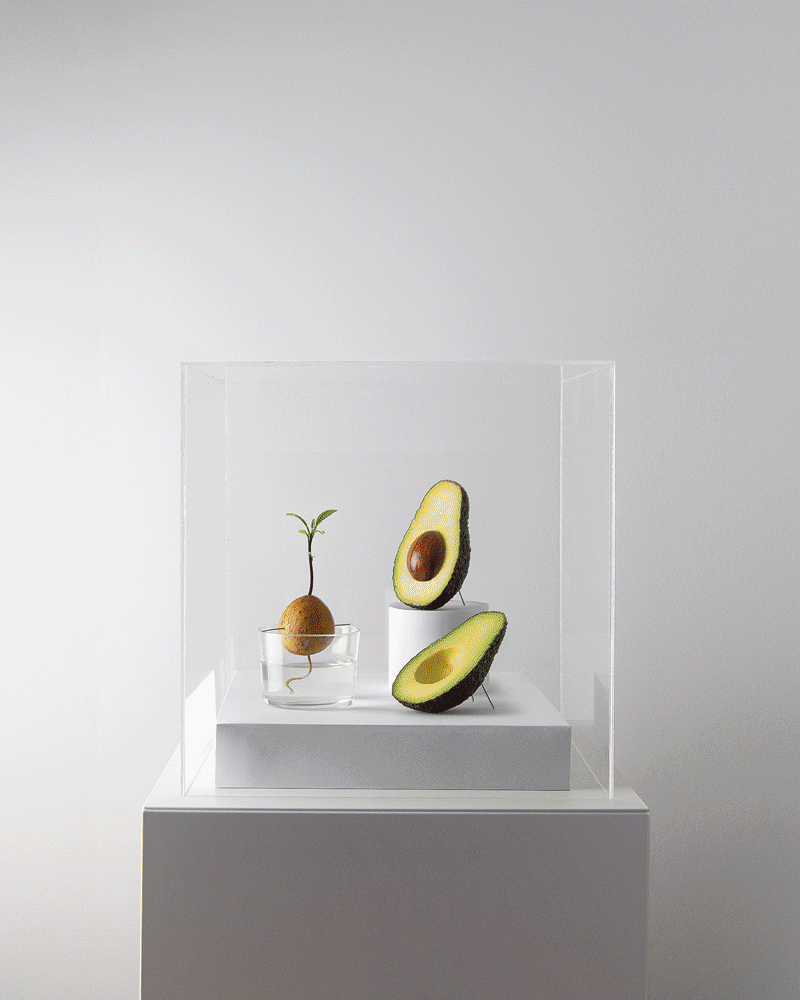
It is extremely worrying and dangerous that nobody’s talking about these issues, and that the only "solution" for most of these problems consists on genetically modifying the crops so they can become drought or fungi resistant. Instead, and because these problems are not isolated but complex, entangled realities, our approach at solving them has to be different and comprehensive.
This exhibition aims to put the focus on the ecological vulnerabilities threatening each of these foods in the hope that food will be a more palpable and approachable take on climate crisis. We can only wish that food, probably the most necessary feature for human life along with water and air —which are also in great danger— will make a wider audience connect and become aware of the problems we’re currently facing.
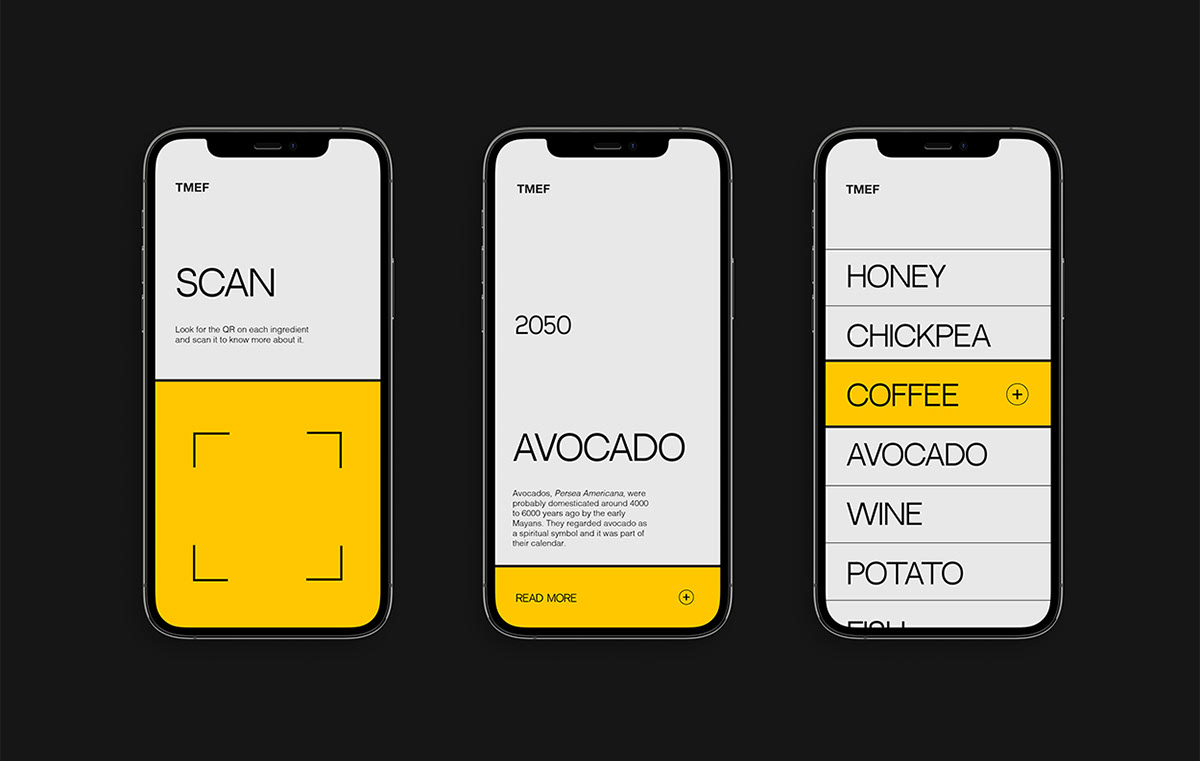
The museum works with a QR code that you can easily
scan to read more about each ingredient’s expiring date
scan to read more about each ingredient’s expiring date
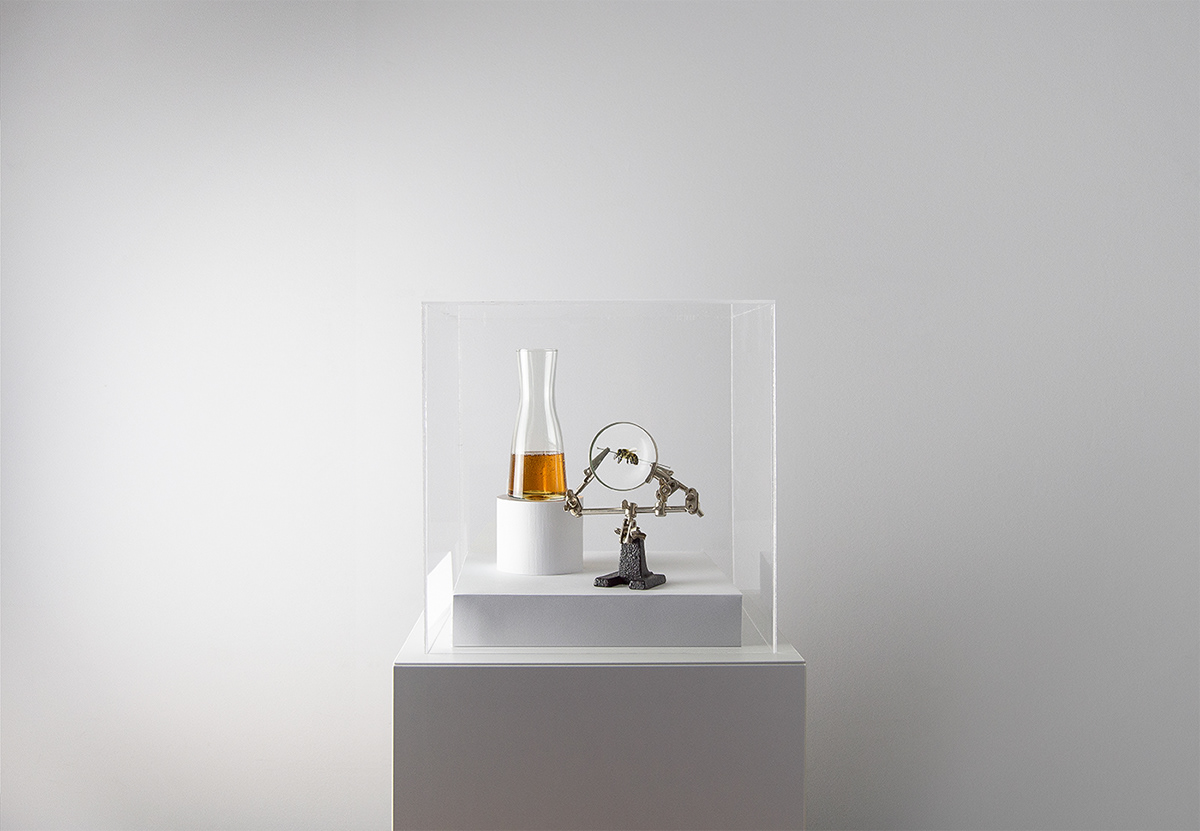
HONEY
EXP. 2050
Honey has been around for a really long time: from 8000 years old paintings in Cuevas de la Araña (Valencia, Spain) depicting people climbing to trees and harvesting this golden liquid, to mentions in the Vedas and Ayurvedic texts of ancient India (4000 years ago) to the oldest honey remains found in pottery in present day Georgia dating back to more than 5000 years. As everybody knows, honey is produced by bees, animals that have been dying off at record rates from pesticides, invasive parasites, reduced food quality due to nutrient content in domestic crops and monocropping farming practices, as well as habitat loss.
But the extinction of bees could also be a problem for other kind of plants and crops to which they’re also pollinators, such as most fruit, berries, onions, beets, broccoli, peppers, safflower, sesame, beans and potatoes. According to Professor Lenore Newman, “if we lose the bees, so many fruit, vegetable and other plant crops would soon follow. […] Today, the bees are indicating to us that something is very wrong with the world. We would be wise to listen. If bees go, a number of critical culinary spices follow.”
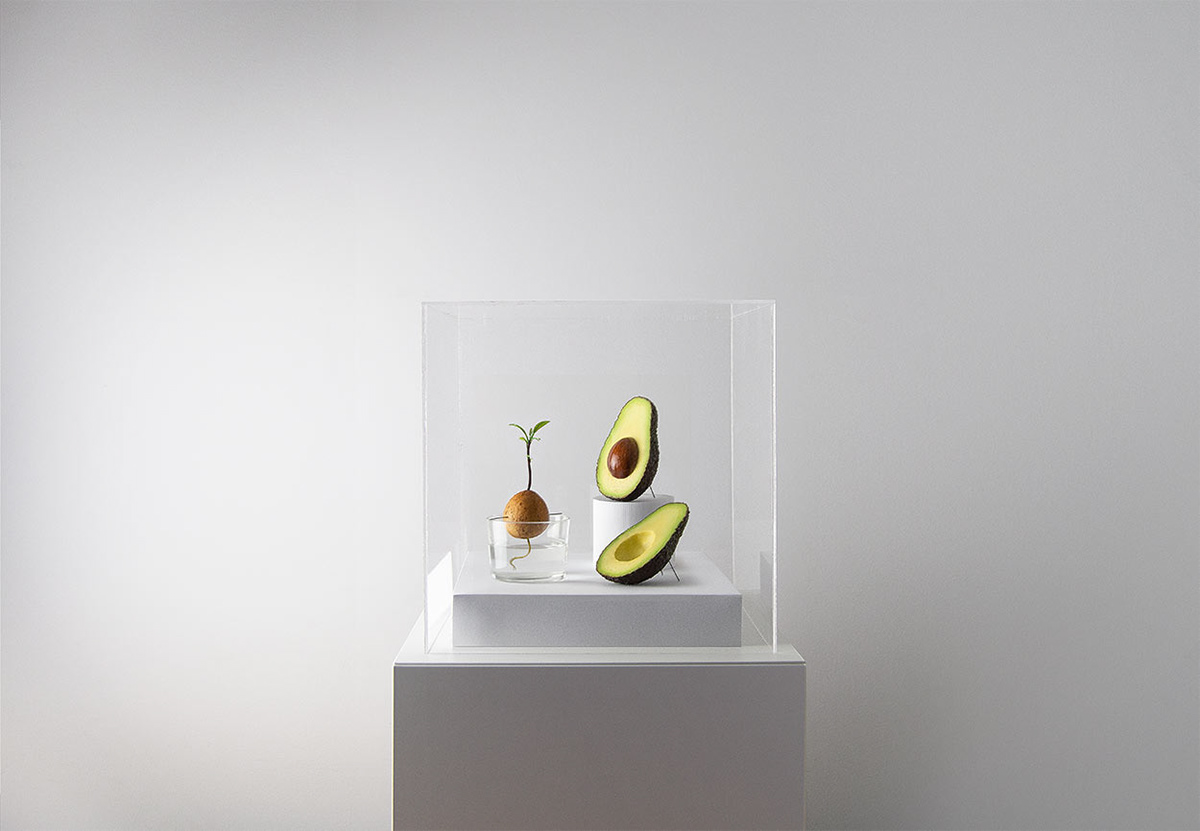
AVOCADO
EXP. 2050
Avocados, Persea Americana, were probably domesticated around 4000 to 6000 years ago by the early Mayans. They regarded avocado as a spiritual symbol and it was part of their calendar. But avocado trees are really delicate and require large amounts of fresh-water to grow. On average, two bathtubs of water (around 200 litters) are needed per avocado. This water footprint is huge, and it is already making the number of avocado trees decline. The value of avocados and the water they require to grow has skyrocketed to a point where drug cartels in Mexico are fighting over the control of the fields, stealing and even killing local farmers and company owners.
. 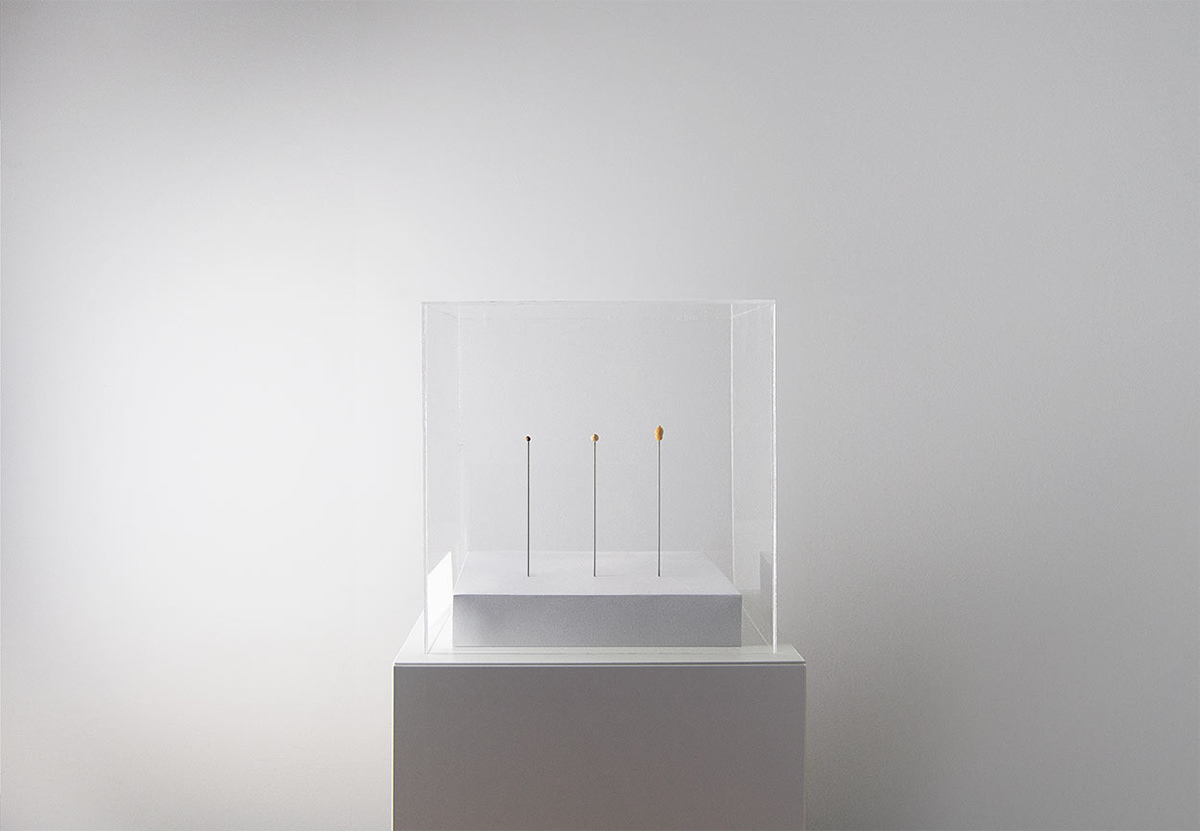
CHICKPEAS, SOY & PEANUT
EXP. 2050
Chickpeas are believed to have originated in the south area of present-day Turkey over 7500 years ago (possibly even 11000 years ago). Right now, they’re one of the most consumed foods all over the world and a crucial source of nutrients and proteins for more than 20% of the global population. However, if avocados needed two bathtubs of water per avocado, chickpeas need eight times more water (around 4000 liters per kilo), in addition to a continuously moist soil during all the long growing season. Raising temperatures, drought and irregular and extreme rainfall patterns are the main dangers for chickpeas.
Same kind of problems apply to soy and peanuts, with both increasing in consumption as more and more people turn to meat alternatives and vegan lifestyles.



"The value of avocados and the water they require to grow has skyrocketed to a point where drug cartels in Mexico are fighting over the control of the fields, stealing and even killing local farmers and company owners."

BANANA
EXP. 2050
Bananas have been consumed and cultivated for more than 9000 years. They can be traced back from present-day New Guinea and later to India, Africa and the Polynesia. It was only when Alexander the Great conquered India that bananas arrived to Europe. Though slight temperature rises may have been beneficial for bananas during the last 15 years, if global warming continues as it is now, by 2050, the outpost from many regions will decrease by more than 80%.
Furthermore, bananas can suffer from a disease known as Panama disease (Tropical Race 4, TR4) that is spreading through Latin America and Australia as global temperature rises. Same happens with another type of fungus, black sigatoka, which causes black leaf streak disease in bananas.
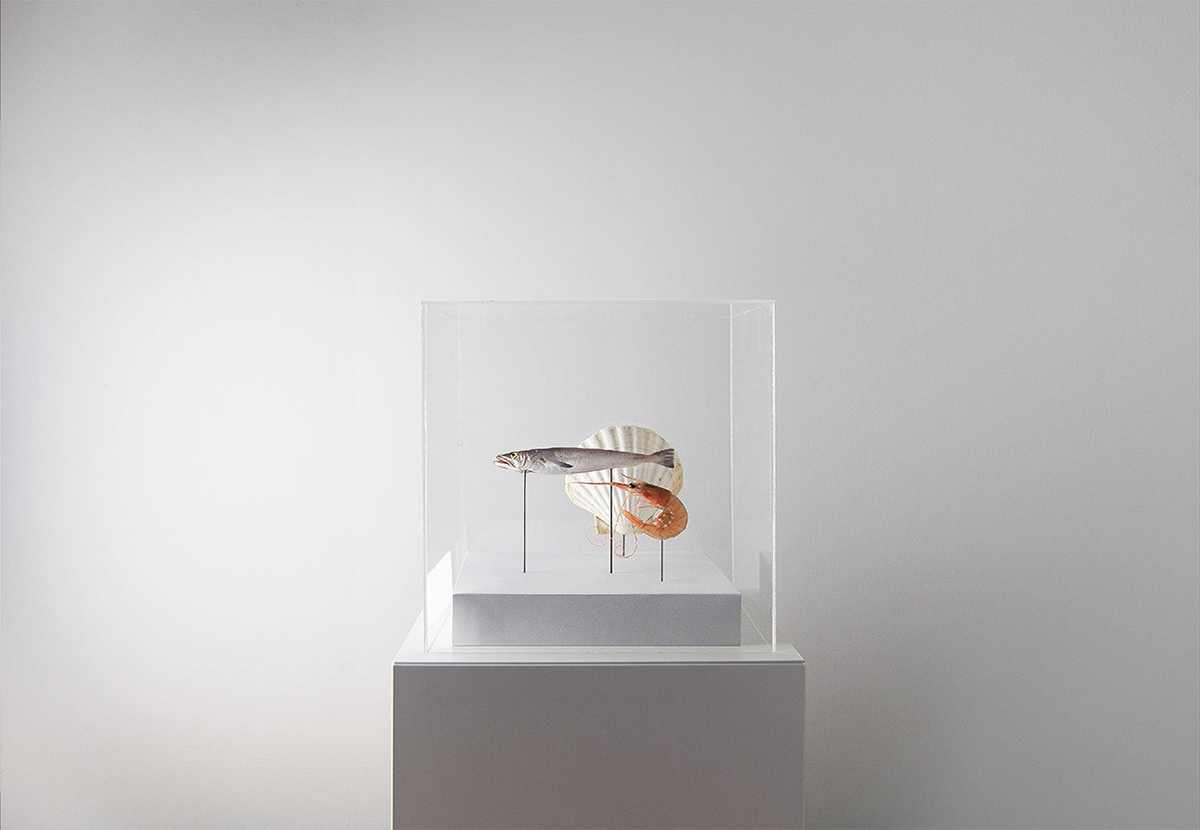
FISH
EXP. 2048
Although some of the most endangered species of (edible) fish are salmon, tuna or scallops, all marine life could become extinct by 2048. No more fish in the oceans due mainly to cruel overfishing and brutal damage to marine ecosystems, that are literally depleting our oceans. According to Professor Lenore Newman, “once we begin fishing a species commercially, it rapidly declines, suffering an 80% reduction in the first fifteen years, on average”. But other causes, such as rising sea water temperature, ocean acidification and pollution, which is already decreasing the number shellfish and corals drastically, are worsening the problem.
And yet an even bigger issue emerges from this one: without fish, no other forms of life depending on them could survive, such as seals, polar bears or seagulls. In other words: without sea life there’s no possible life on this planet.
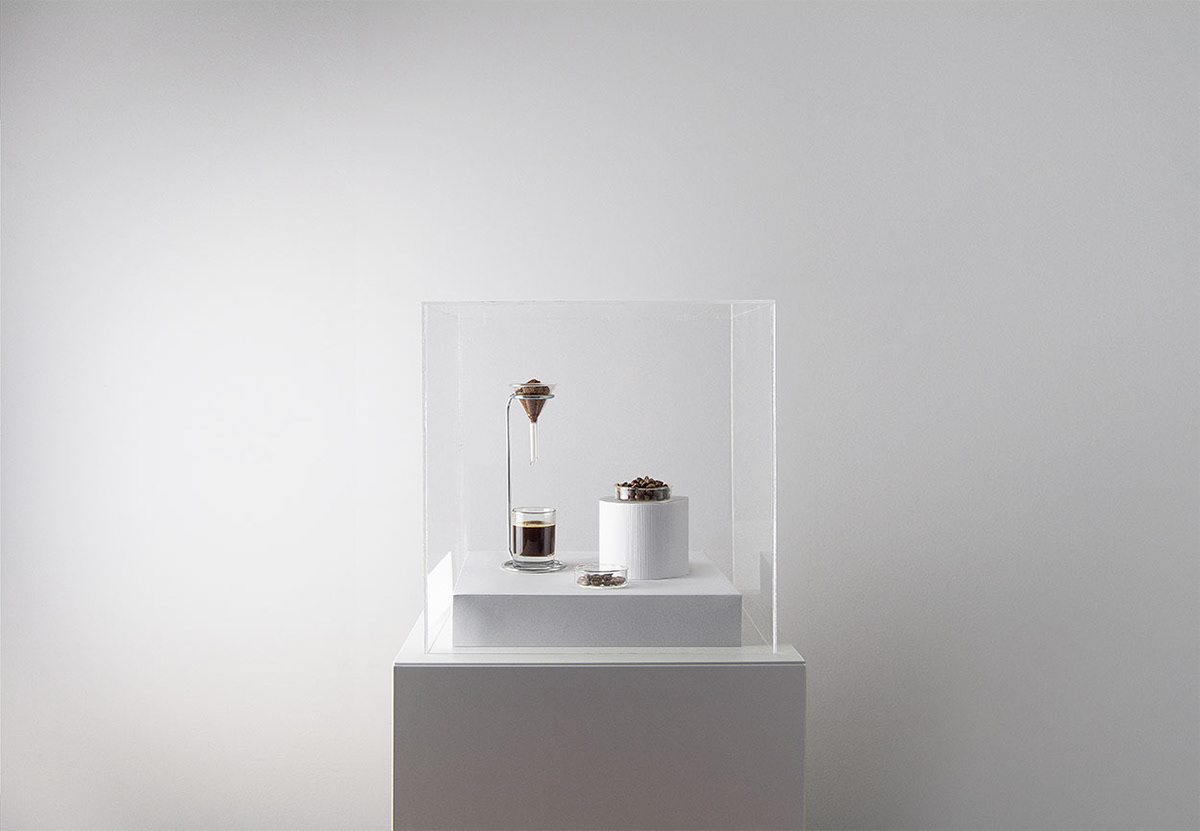
COFFEE
EXP. 2050
Coffee is now one of the most consumed drinks in the world, but it’s origins date back to the fifteen century BC, when it was first cultivated in present day Yemen, on the Arabian Peninsula. 60% of wild coffee plants are at risk of extinction, and according to the International Center for Tropical Agriculture (ICTA), the global area suitable for coffee growth will be cut by half by 2050. This is, once again, caused by drought, rising temperatures that are beneficial for the spread of a leaf rust fungus —40% of al coffee plants in Central America are expected to disappear because of this fungus— as well as for some tiny black beetles known as "coffee berry borers" (hypothenemus hampie).



“if we lose the bees, so many fruit, vegetable and other plant crops would soon follow. […] Today, the bees are indicating to us that something is very wrong with the world. We would be wise to listen. If bees go, a number of critical culinary spices follow.”
Prof. Lenore Newman
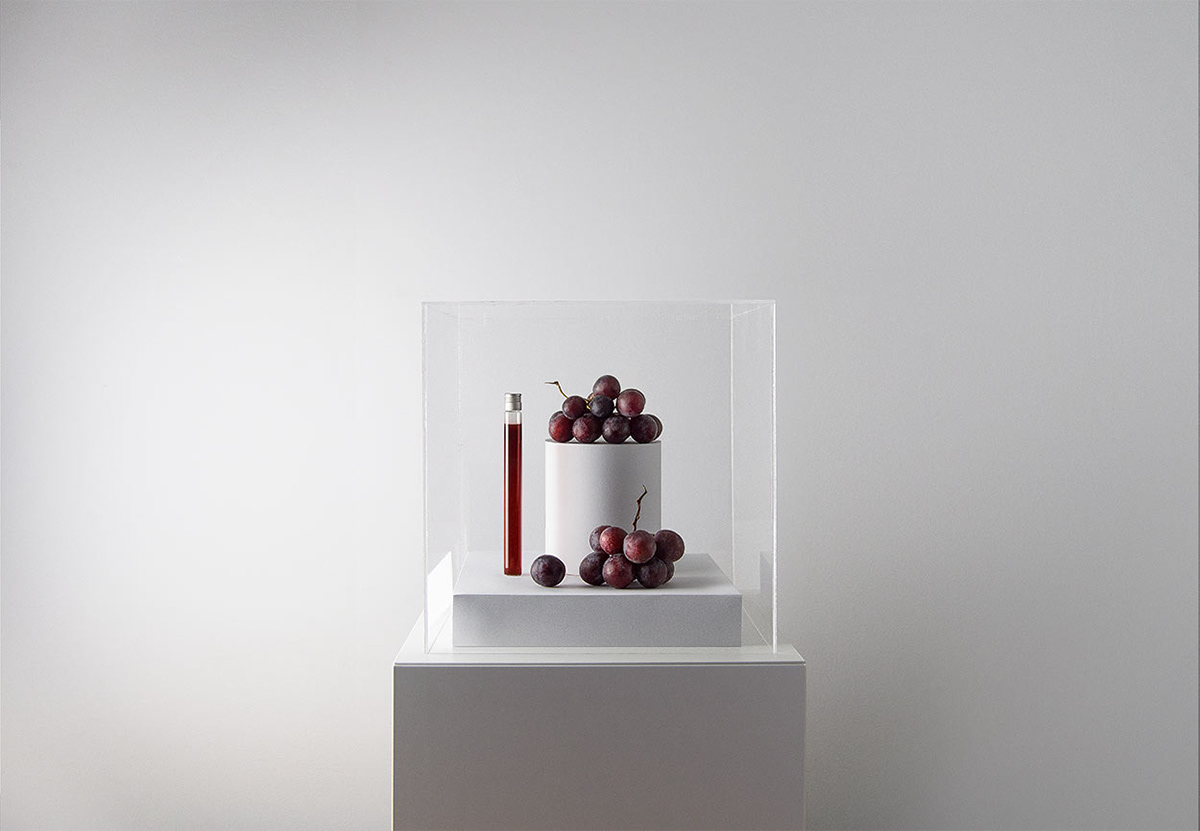
WINE
EXP. 2100
Wine is, along with beer (another endangered drink), one of the oldest drinks in the world. It was invented at least 10000 years ago between the Black and the Caspian seas. But we have also evidence of wine in China, Iran or Armenia (9000 to 6000 years ago). However, grapes grow in certain microclimates, where the balance between hot and cold days has to be really specific. With climate change, these areas are decreasing rapidly, and if things continue this way, they will soon disappear. At the current rate of warming, production of wine will decrease by more than 80% by the end of this century.

POTATOES
EXP. 2050
Potatoes were first cultivated by the Incas from present day Peru and Bolivia around 10000 years ago. Once again, raising temperatures are rendering large portions of land where potatoes used to grow, dry and uninhabitable. According to FAO, “Potato biodiversity is under threat —ancient varieties cultivated for millennia have been lost and wild species are threatened by climate changes.”
In this regard, the International Potato Center (IPC), as funny as it may sound, has created a potato gene bank to make sure we don’t lose this valuable crop, and has already cloned about 70% of the world’s potato plants. However, and even though there are more than 2500 different potato varieties in Peru alone, without this kind of interventions, 25% of the potato species will become extinct by 2050.

CHOCOLATE
EXP. 2050
Cacao has been consumed for around 3500 years now, first by the Olmecs, and later by the Mayans and Aztecs. As with avocado trees, cacao trees are extremely delicate, needing tons of water to survive the heat of the areas in which they are grown. A single chocolate bar, for example, requires about ten bathtubs of water to make (most of it goes to watering the cacao tree itself).
Also, the microclimates in which theobroma cacao thrives,—twenty degrees’ latitude north and south of the equator— will disappear in about fifty years. Farmers are already experiencing extreme irregular weather patterns affecting the crops, and in a business as usual scenario, the IPCC (Intergovernmental Panel on Climate Change) predicts only 10% of cacao groves will still exist by 2050. To make it even worse, there’s limited genetic variation in cacao plants, which leaves cacao defenseless against infectious diseases.



"60% of the wild coffee plants are at risk of extinction, and according to the International Center for Tropical Agriculture (ICTA), the global area suitable for coffee growth will be cut by half by 2050"
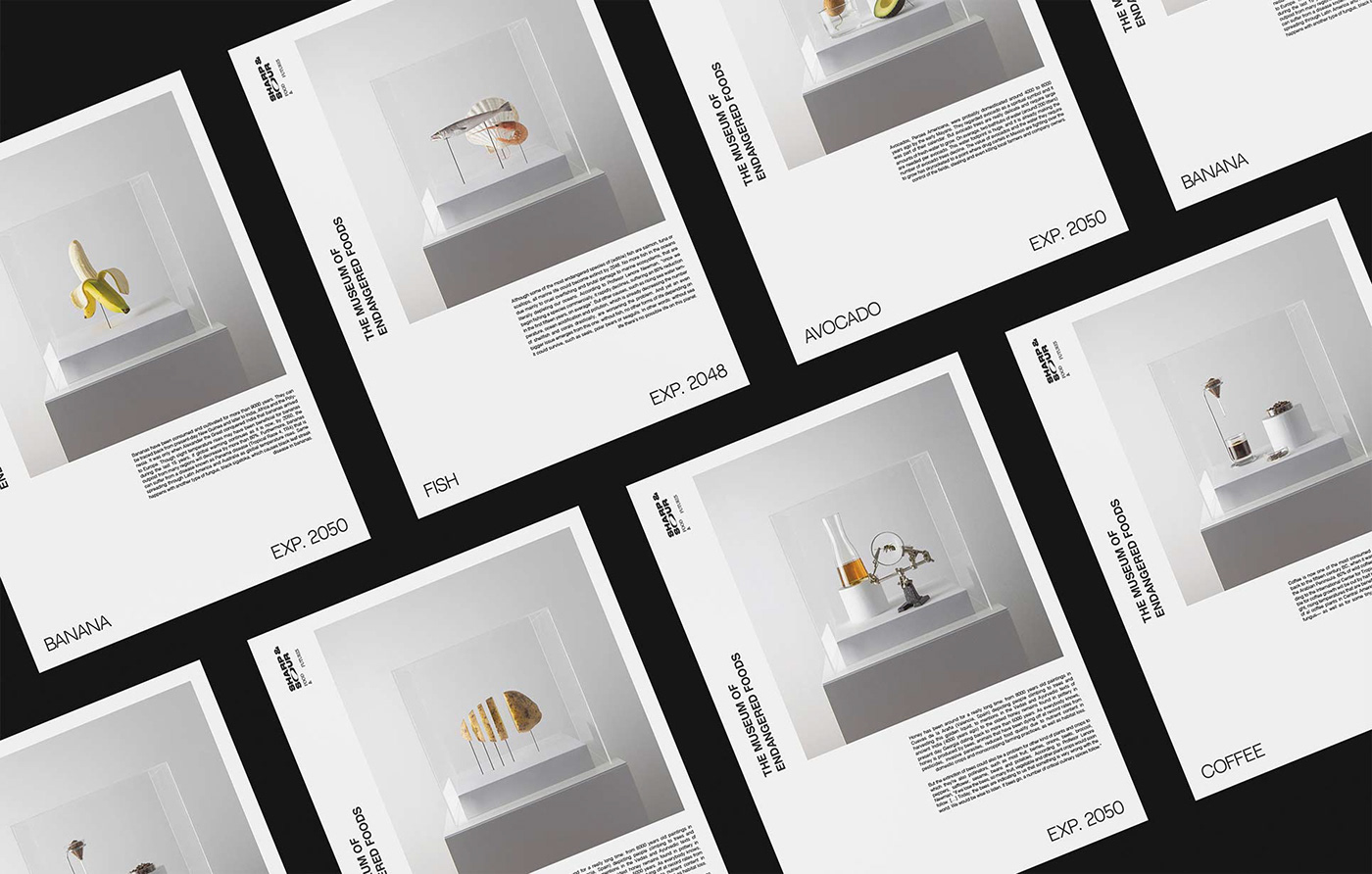
Our intention is to bring the exhibition to any museum or art gallery that could be interested, so if that's your case, please send us a message!

Welcome to The Museum
of Endangered Foods!






